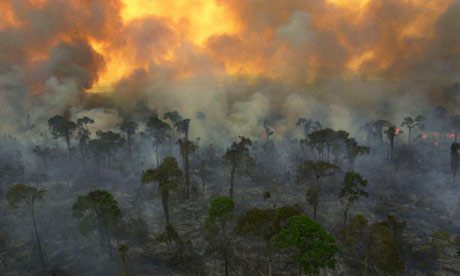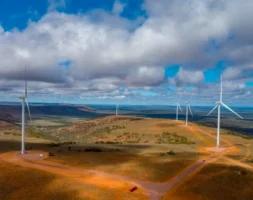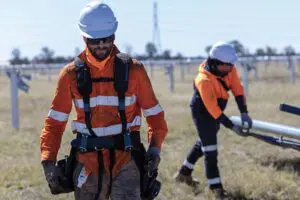As Australia knows all too well, extreme heat is an absolute grid killer. Transmissions lines sag and in the worst case make contact with bushes and trees to ignite dangerous fires. Thermal power stations overheat, and wind and solar can be forced to enter a shutdown mode to protect components and site infrastructure (such as capacitor banks and transformers).
As I’ve been covering at RenewEconomy, a range of extreme weather events are causing the same havoc for power grids in America. Earlier this year, a freak storm resulted in possibly the worst blackout on record in Texas, as fossil gas supply lines and power plants shut down, in addition to some wind, solar, coal and nuclear plants.
What is currently happening in North America is an extreme weather that is shocking, dangerous and it hasn’t happened before. Scientists, though, have been predicting a worsening of heatwaves for some time, and this is purely the manifestation of those long-held predictions. The climate is warming due to the burning of fossil fuels, and these are the consequences.
Last week, extreme heat resulted in hundreds of heat records being shattered in California and the Southwest of America.
114°F. It has never been hotter in recorded history *anywhere* in Canada https://t.co/92dBiDKL5H
— Brian Kahn (@blkahn) June 27, 2021
Speaking of polar, here's the polar opposite of NZ right now!#Canada: Vancouver is currently +36C & eastern suburbs are 42C (record breaking). Further inland Kamloops has highs of 49C next two days.
In comparison, Dubai is only 35C!#USA: It's 43C in Portland, 38C in Seattle. pic.twitter.com/Xiy85OGVEQ
— WeatherWatch.co.nz (@WeatherWatchNZ) June 28, 2021
Already, this is putting a strain on the various power grids that have been affected. These extremes are occurring in many places that have not experienced this heat before, and the demand for air-conditioning is rising rapidly. This is in addition to infrastructure that is significantly impacted. Portland’s streetcar system, for instance, has seen its power cables damaged quite severely:
In case you're wondering why we're canceling service for the day, here's what the heat is doing to our power cables. pic.twitter.com/EqbKUgCJ3K
— Portland Streetcar (@PDXStreetcar) June 27, 2021
In California, several major outages are already occurring:
From a couple hundred to THOUSANDS:
More than 3,500 PGE customers are without power right now, just hours before Portland is expected to break another all-time high heat record.
Roughly an hour ago there were only about 500 outages (almost all in Washington Co.)#LiveOnK2 pic.twitter.com/27C5W9fEav
— Genevieve Reaume (@GenevieveReaume) June 28, 2021
“If extreme weather conditions threaten our ability to safely operate the electrical grid, we will turn off power to help protect public safety”, a Portland General Electric spokesperson told Scientific American. In Washington, the utility Puget Sound Energy (PSE) reassured customers that they could meet projected demand.
In California, the grid operator CAISO (California Independent System Operator) issued a plan to call for what are known as ‘flex alerts‘ due to the high heat levels. These are requests made by the grid operator that consumers voluntarily reduce their electricity demand through actions such as deferring washing loads or setting higher air conditioning setpoints. In August last year, record heatwaves paired with the failure of gas plants resulted in widespread blackouts, incidents which were immediately falsely blamed on the state’s heavy penetration of solar power.
The stakes are extremely high, in the US at the moment. The immediate impacts of the heatwave are going to be severe. Many households unfamiliar with 40 – 45 degree celsius heat are going to have to figure out ways of coping with it. Homes and buildings are not designed for these temperatures, but neither are many parts of electricity grids and transport infrastructure.
And if the worst comes to pass, and grids do begin to suffer damage substantial enough to cause blackouts, the chances that renewable energy is blamed are quite high. It’s a perverse problem, considering the fact that it is fossil fuels that are causing the rising temperature extremes. At a federal level in the US, clean energy funding remains far from guaranteed, with the inclusion in an infrastructure bill blocked and a plan to push funding through another part of Congress.
It’s a race against time to update and upgrade electricity grids to become both zero emissions and adapted to the climate change impacts that are already locked in. And it’s one many countries are currently losing.










